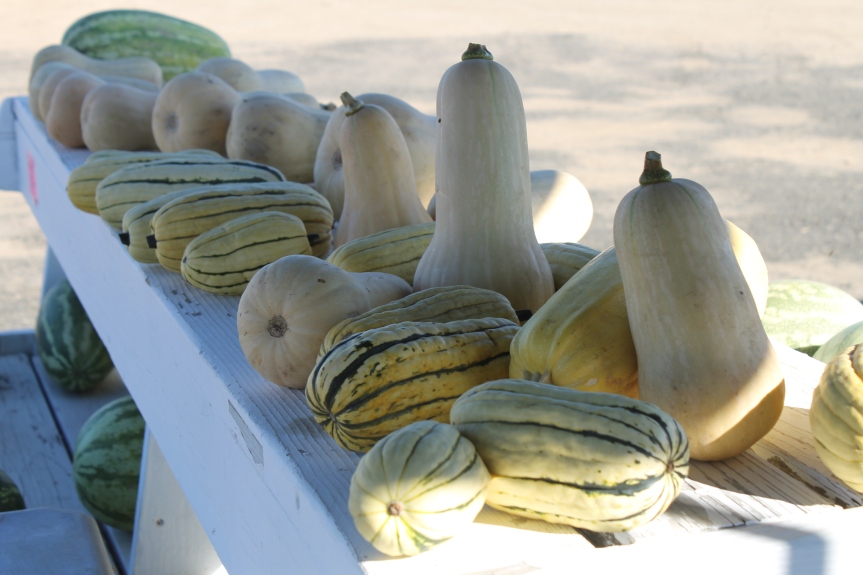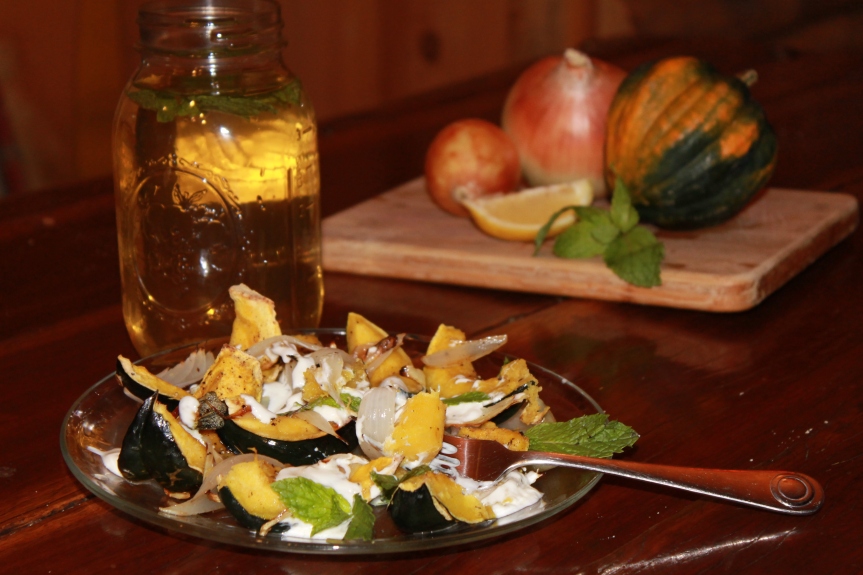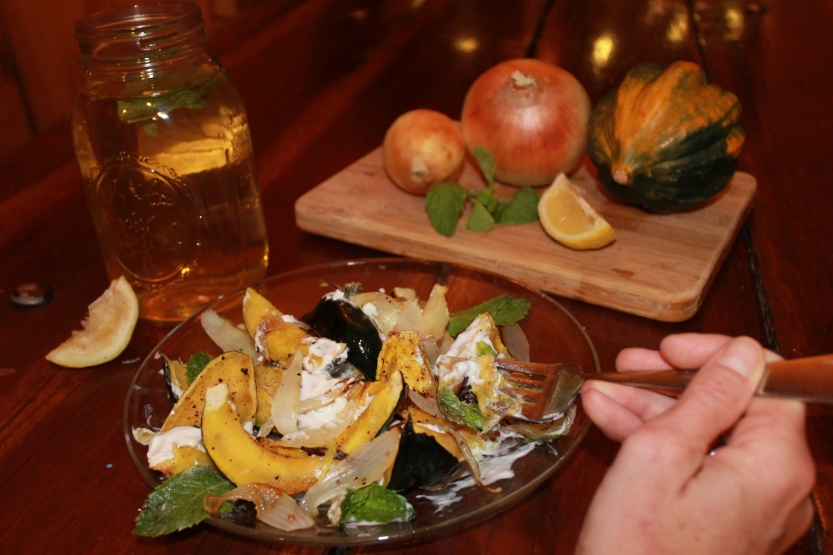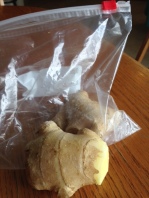Delicata “delicious” squash has a smooth, rich creamy taste and texture similar to butternut, without the peeling. The skin is thin, edible and add’s a crisp texture. It can be steamed in as little as seven minutes when cut into 1-inch cubes, baked, grilled or roasted in up to thirty minutes, and has a savory sweetness when caramelized.
This light-weight squash is easy to cut, clean and cook. If you’re feeling adventurous, the seeds can be roasted for a crunchy snack! Delicata squash is excellent paired with Sage Mountain Pork, onions, maple & cayenne pepper or simply with a pinch of salt!
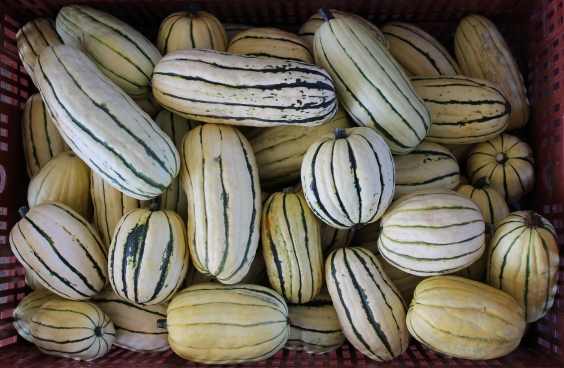
Today I’ve decided to boost squash’s antioxidant, anti-inflammatory, anti-diabetic and insulin-regulating benefits with two super foods! The most protein-rich food available, Quinoa contains all nine essential amino acids, is rich in iron, magnesium, B2, manganese, and lysine essential for tissue growth and repair.
Arugula, my favorite green discovered last summer working at Sage Mountain Farm, has surprising health benefits. Inactivating cancer-causing chemicals, arugula protects cellular DNA from damage, induces cell death in cells that have already become cancerous, and prevents tumor blood vessel formation and tumor cell migration. Wow! Arugula’s vitamin and mineral rich content are necessary for soft subtle healthy skin, healthy eyes by preventing eyestrain, strong bones decrease rick of osteoporosis, boosts mood naturally by increased production of serotonin, creates red blood cells and is an excellent blood cleanser and oxygenator. Chlorophyll rich arugula has a strong detoxification effect, increases energy levels and is being studied to prevent against heart disease, diabetes, Alzheimer’s and depression.
Arugula, squash and apples are great weight loss food too! Replace foods that promote weight gain with leafy greens & veggies as a simple way to boost your nutritional intake and minimize body fat storing insulin spikes. In the long term this is a far easier way of keeping the weight off than restrictive dieting.
Roasted Delicata Squash with Quinoa, Apple & Arugula Salad
Toss quinoa with arugula, apple, raisins and fresh herbs, then spoon the salad into a halved baked squash.
Ingredients:
- 2 Delicata squash, halved lengthwise and seeded
- 2 tablespoons extra-virgin olive oil
- Salt and freshly ground pepper
- 1 cup quinoa
- 2 tablespoons golden raisins
- 1 tablespoon sherry vinegar
- 1 teaspoon honey
- 1 Granny Smith apple, finely diced
- 1 large shallot, minced
- 1 garlic clove, minced
- 2 tablespoons chopped mint
- 2 tablespoons chopped parsley
- 2 cups arugula
Preparation:
- Preheat the oven to 350°. Brush the cut sides of the squash with 1 teaspoon of the olive oil and season with freshly ground Himalayan salt and pepper. Place the squash cut side down on a baking sheet and roast for about 45 minutes, until tender.
- Meanwhile, in a saucepan, bring 2 cups of lightly salted water to a boil. Add the quinoa, cover and simmer for 10 minutes. Stir in the raisins and simmer, covered, until the water is absorbed, about 5 minutes. Transfer the quinoa to a large bowl and let cool.
- In a small bowl, whisk the vinegar and honey with the remaining 1 tablespoon plus 2 teaspoons of olive oil and season with freshly ground Himalayan salt and pepper. Add the dressing to the quinoa along with the apple, shallot, garlic, mint and parsley and toss well. Add the arugula and toss gently.
- Set the squash halves on plates. Fill with the salad.
- Give thanks… and enjoy!
Additional Recipe
Healthy Roasted Squash Seeds:
Scoop the pulp and seeds from inside the squash and separate out the seeds. Place them in a single layer on a cookie sheet and lightly roast them at 170°F for 15-20 minutes. By roasting at a low temperature for a short time you help to preserve their healthy oils.
*Winter squash is a vegetable that might be especially important for us to purchase organic. Recent agricultural trials have shown that winter squash can be an effective intercrop for use in remediation of contaminated soils, according to whfoods.com. For this reason, make a special point of purchasing certified organic winter squash from a local, small certified organic farm. We at Sage Mountain Farm are dedicated to growing the most nutritious, delicious certified organic fruits and vegetables.
At Sage Mountain Farm, we supply only the best nutrient rich produce grown in good healthy soil, mountain rich air using the cleanest natural volcanic spring water available to our local customers in San Diego County, Riverside and Palm Springs.
Let’s make small farms in our region stronger and profitable.
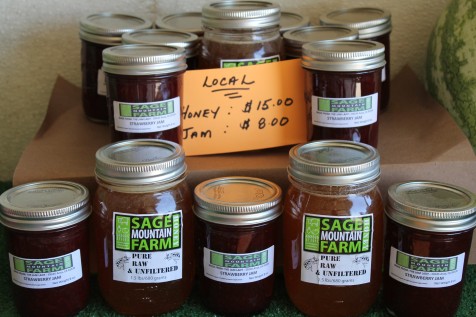
NOW AVAILABLE!

This week in my Sage Mountain Farm CSA box:
Local Raw Clover Honey, Strawberry Watermelon Jam, Local Farm-fresh Eggs, Concord grapes, Certified Organic tomatoes, a variety of Apples, Oranges, Radishes, Candy Onions, Tomatillos, Delicata & Butternut Squash, Dates Medjool, Watermelon, and a bag big of luscious Arugula.
Thank you for visiting the Sage Mountain Farm BLOG!
Subscribe & follow
Comments, suggestions and questions?
Contact me directly: amy@sagemountainfarm.com
Visit www.sagemountainfarm.com & www.sagemountainbeef.com
for more information about our farm.
Together, let’s get healthy!

Many blessings to you and yours!


